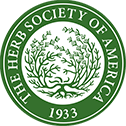What We Do
Conservation and Sustainable Gardening
North America is graced with an amazing array of native plants in a wide range of habitats from boreal forests, alpine tundra, and prairie grasslands to interior deserts, coastal salt marshes, and tropical rainforests. About 20,000 species of vascular plants are native to one or more states in the US*.
Many of these natives are threatened by an accumulation of factors related to population growth and the spread of development, browsing or trampling by domestic or feral animals, competition from aggressive, non-native plants, and over-collection of those plants that have commercial and medicinal value.
Conserving the biodiversity and health of native plants and ecosystems is essential to a healthy planet and continued existence of these plants. We have a growing understanding of the complexities of ecosystems, in which each plant, the soil, insect, bird and animal life, invertebrates and other organisms, water, air, temperature, and elevation all work together to maintain ecosystem integrity. It is impossible to know the full ramifications of the loss of one or more species in this intricate biological web of life.
It is extremely important to develop and implement effective plant conservation programs before more species and plant communities become critically endangered. There are plant species that remain unknown to us. In California, more than 200 new species have been discovered in the last 25 years. And fifty new plant species have been discovered in Utah and Nevada during the past fifteen years. Some of these species were already threatened at the time they were discovered.
Native plant conservation strategies not only protect the most imperiled species, but ensure the long-term survival of all native plant species and communities.
In 2002, The Herb Society of America joined the Plant Conservation Alliance, a collaborative partnership among 12 U.S. Federal Agency Members and more than 300 Non-Federal Cooperators representing biologists, botanists, horticulturists, resource management consultants, special interest groups, non-profit organizations, concerned citizens, nature lovers, and gardeners. PCA Members and Cooperators work collaboratively to solve the problems of native plant conservation and native habitat restoration, ensuring the sustainability of ecosystems in the United States. All share in the Plant Conservation Alliance mission:
"To protect native plants by ensuring that native plant populations and their communities are maintained, enhanced, and restored."
As a PCA Cooperator and a respected plant organization, HSA has many opportunities to educate our members and the public on the necessity of native plant conservation and restoration, as well as advocate and support these efforts. To address this issue directly, The Herb Society of America in 2007 established a Native Herb Conservation Committee whose focus is:
• To study and preserve North America’s native flora through education and advocacy
• To facilitate the recovery of rare, threatened, and endangered plants through collaborative efforts with existing agencies
• Promote conservation of North American native plants through research, horticulture, and habitat preservation
For more information on what you can do to help promote and conserve native plants, see the Notable Native and GreenBridges sections of our website.
*Flora of North America Editorial Committee, eds. 1993+. Flora of North America North of Mexico. 16+ vols. New York and Oxford. Vol. 1, 1993; vol. 2, 1993; vol. 3, 1997; vol. 4, 2003; vol. 5, 2005; vol. 7, 2010; vol. 8, 2009; vol. 19, 2006; vol. 20, 2006; vol. 21, 2006; vol. 22, 2000; vol. 23, 2002; vol. 24, 2007; vol. 25, 2003; vol. 26, 2002; vol. 27, 2007; vol 28, 2014; vol. 9, 2014; vol. 6, 2015


